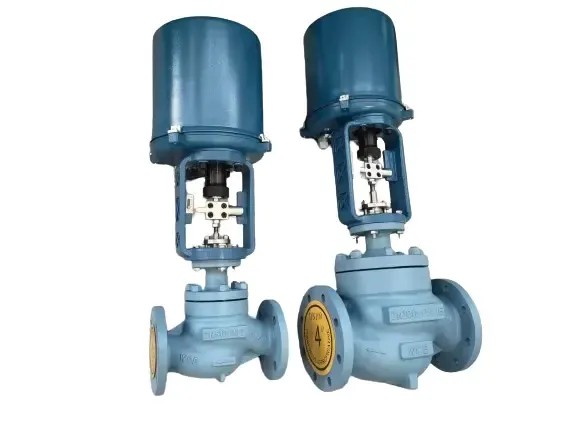Motorized Control Valves: Precision Automation for Modern Fluid Management
Introduction
In today’s industrial systems and infrastructure, precise and efficient fluid flow control is essential. Motorized control valves provide an advanced automated solution, leveraging electric motors to accurately open, close, or modulate valve positions. These China Control Valves are ideal for large-scale or remote applications—including agricultural irrigation, aircraft deicing, automated fire suppression, and complex industrial processes—where manual intervention is impractical.
By automating valve actuation, motorized control valves reduce operational complexity, improve system efficiency, and seamlessly integrate into automated control environments, making them a critical asset across numerous industries.
Understanding Motorized Control Valves
Motorized control valves represent a category of valves actuated by electric motors, encompassing diverse types such as gate, globe, ball, and butterfly valves. The defining characteristic is the electric actuator, which receives control signals and translates them into precise valve positioning—enabling repeatable and accurate flow regulation.
While their mechanical internals often mirror those of manual valves, the integration of electric actuators allows for automated and remote operation, essential for applications demanding high precision and consistency.
Types of Motorized Control Valves
Rotary (Quarter-Turn) Valves
These valves actuate through a 90-degree rotation:
- Ball Valves: Known for robust sealing and fast actuation, ball valves excel in high-pressure environments such as fuel lines and chemical plants.
- Butterfly Valves: Compact and lightweight, butterfly valves are well-suited to space-constrained systems like HVAC, water treatment, and fire suppression.
Linear (Vertical Travel) Valves
These valves regulate flow via vertical stem movement:
- Gate Valves: Utilize a gate lifted or lowered by a lead screw, commonly found in water distribution and large industrial systems.
- Globe Valves: Feature a tapered plug moving vertically, ideal for applications requiring precise flow metering such as pharmaceuticals and chemical processing.
How Motorized Control Valves Work
Central to operation is the electric actuator that receives commands from a control system. Upon receiving a signal, the motor drives the valve stem through rotational or linear motion, adjusting the valve’s internal component—such as a plug or disc—to regulate fluid flow.
Key components include:
- Electric Motor: Powers the valve movement.
- Gear Train: Transfers motor motion to the valve stem.
- Limit Switches: Provide position feedback, ensuring precise stops.
- Control System: Sends operational commands based on system requirements.
This automation enables levels of precision and responsiveness unattainable with manual control.
Advantages of Motorized Control Valves
- High Precision: Enables fine-tuned flow control essential in sensitive processes.
- Remote and Automated Operation: Facilitates operation without on-site personnel, integrating with SCADA and other automation platforms.
- Enhanced Safety: Minimizes human exposure in hazardous environments.
- Energy Efficiency: Motorized valves consume power primarily during movement, with low standby consumption.
- Durability: Engineered from robust materials for long service life under demanding conditions.
Applications
Motorized control valves find extensive use in:
- Industrial Process Control: Oil & gas, petrochemical, and power plants rely on precise flow regulation to optimize safety and efficiency.
- Water & Wastewater Management: Critical for municipal water supply and treatment facilities to maintain resource efficiency.
- HVAC Systems: Regulate heating, cooling, and ventilation fluids for comfort and energy savings.
- Fire Suppression: Enable rapid, reliable response in safety-critical systems.
- Aerospace & Transportation: Used in aircraft deicing and fuel systems requiring reliable precision.
- Agricultural Irrigation: Improve water distribution accuracy, enhancing crop yields and conservation efforts.
Challenges and Considerations
- Initial Cost: Higher upfront investment compared to manual valves due to actuator complexity.
- Maintenance: Requires periodic upkeep of electrical and mechanical components.
- Power Dependency: Dependence on stable electrical supply, often necessitating backup power solutions.
- Environmental Constraints: Specialized materials/coatings may be required for corrosive or high-viscosity media.
The Future of Motorized Control Valves
Advancements in actuator technology, materials science, and control algorithms will drive enhanced efficiency, adaptability, and integration. IoT-enabled smart valves with real-time monitoring and predictive maintenance capabilities are poised to become standard, supporting sustainability and operational excellence across industries.
Conclusion
Motorized control valves have transformed fluid flow management by combining automation, precision, and reliability. Their widespread adoption across industries highlights their vital role in enhancing system performance, safety, and energy efficiency.
For organizations aiming to optimize operations and future-proof infrastructure, investing in motorized control valves is a strategic move toward smarter, safer, and more cost-effective fluid control. Learn more about Google SEO.





Comments